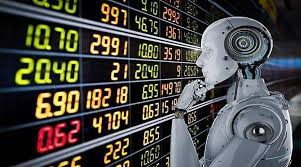In the ever-evolving landscape of finance, technological advancements continually reshape how traders engage with the markets. Among the latest innovations, Forex robots stand out as a promising tool for both novice and forex robot traders. These automated systems, also known as Expert Advisors (EAs), offer a way to execute trades in the foreign exchange (Forex) market without human intervention. But what exactly are Forex robots, how do they work, and what are their implications for traders? Let’s delve deeper into this fascinating realm.
Understanding Forex Robots
Forex robots are software programs designed to analyze the Forex market, identify trading opportunities, and execute trades on behalf of the user. They operate based on predefined trading strategies, algorithms, and parameters set by the trader or the developer. These algorithms are often backed by extensive historical data analysis and may incorporate various technical indicators, chart patterns, and fundamental factors to make trading decisions.
How Do Forex Robots Work?
Forex robots operate on a set of rules and conditions programmed into their algorithms. These rules govern when to enter or exit trades, how much to invest, and what risk management strategies to employ. When deployed, the robot continuously monitors the market in real-time, scanning for opportunities that match its programmed criteria. Once it identifies a favorable trade setup, it executes the trade automatically, without requiring any manual intervention from the trader.
Key Features of Forex Robots
- Automation: The primary feature of Forex robots is automation. They can execute trades round the clock, without being influenced by emotions or human biases, which are common pitfalls in manual trading.
- Backtesting: Before deploying a Forex robot in live trading, users can backtest it using historical market data to evaluate its performance. This allows traders to assess the viability of the robot’s strategy and make any necessary adjustments before risking real capital.
- Diversification: Forex robots enable traders to diversify their trading strategies by running multiple robots simultaneously or combining automated trading with manual strategies. This can help spread risk and improve overall portfolio performance.
- Speed and Efficiency: Robots can react to market conditions instantaneously, executing trades with precision and efficiency. This is particularly beneficial in fast-paced markets where timely execution is crucial.
- Risk Management: Most Forex robots incorporate risk management features to control trade size, set stop-loss and take-profit levels, and manage overall exposure. This helps protect capital and minimize losses during adverse market conditions.
Benefits and Challenges
Benefits:
- 24/7 Trading: Forex robots can trade around the clock, taking advantage of opportunities in different time zones and markets.
- Emotion-Free Trading: By eliminating human emotions from the trading process, robots can stick to the trading plan consistently, without succumbing to fear or greed.
- Increased Efficiency: Automation streamlines the trading process, allowing traders to focus on strategy development and analysis rather than routine tasks.
Challenges:
- Over-Optimization: Excessive optimization of trading algorithms based on historical data can lead to poor performance in live markets due to overfitting.
- Market Volatility: While robots excel in executing predefined strategies, they may struggle to adapt to sudden changes or unpredictable market conditions.
- Dependency on Technology: Technical glitches or connectivity issues can disrupt automated trading operations, potentially leading to missed opportunities or losses.
The Future of Forex Robots
As technology continues to advance, the capabilities and adoption of Forex robots are likely to expand further. Machine learning and artificial intelligence are increasingly being integrated into trading algorithms, enabling robots to learn from market data and improve their performance over time. Moreover, the rise of cloud computing and remote servers has made it easier for traders to deploy and manage automated trading systems from anywhere in the world.
Conclusion
Forex robots represent a significant advancement in the field of algorithmic trading, offering traders the opportunity to automate their trading strategies and potentially enhance their profitability. While they come with their own set of benefits and challenges, Forex robots continue to gain popularity among traders seeking to streamline their operations and capitalize on market opportunities. However, it’s essential for traders to exercise caution, conduct thorough research, and test any automated system rigorously before entrusting it with real capital. Ultimately, the successful integration of Forex robots into trading workflows hinges on striking the right balance between automation and human oversight.
